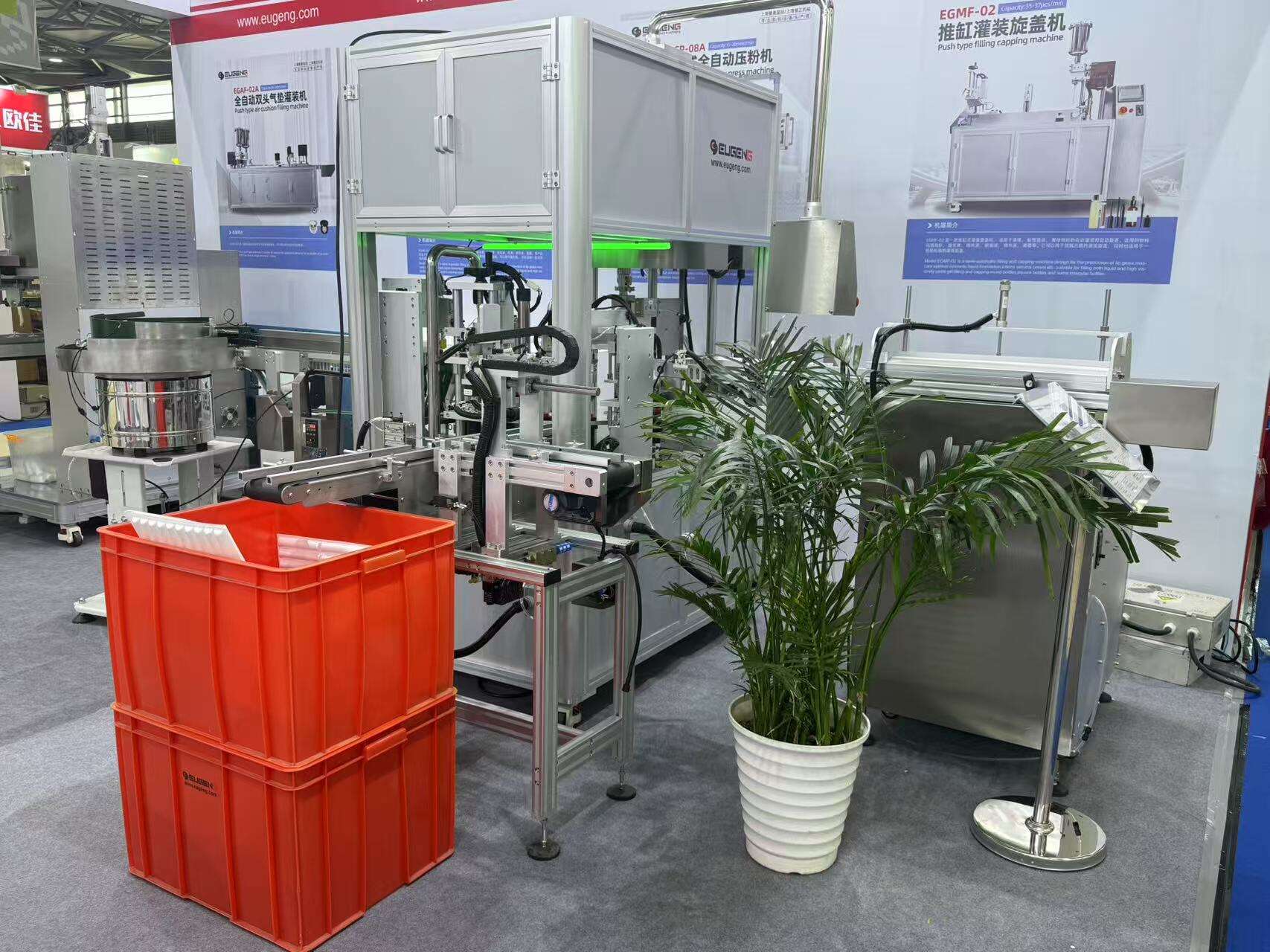Key Factors in Selecting an Automatic Filling and Capping Machine
Assessing Production Speed Requirements
A critical aspect of choosing the right automatic filling and capping machine is understanding your production speed requirements. In high-demand environments, machines that can efficiently fill and cap bottles rapidly, sometimes exceeding speeds of 150 bottles per minute, are essential. It is crucial to consider fluctuating production rates, ensuring that your machine can adjust to varying output needs. Moreover, while speed is important, the balance between speed and accuracy must be maintained to ensure product quality isn't compromised during faster operations.
Container Type Compatibility Considerations
When selecting a filling and capping machine, container type compatibility should be thoroughly assessed. Identify which types of containers, such as bottles, jars, or cans, your machine needs to handle, ensuring it can accommodate various shapes and sizes without extensive modifications. Additionally, consider whether your machine can manage different materials like glass, plastic, and aluminum, as this can significantly impact throughput and maintenance requirements. If your production line includes unique container designs, you may need custom machinery. Multi-format machines offer enhanced flexibility, allowing quick adaptation to different container types, which can be a valuable asset for diverse production needs.
Liquid Viscosity and Filling Precision Needs
Considering the liquid viscosity and filling precision needs is paramount when choosing an automatic filling and capping machine. Determine the types of liquids, whether thin, medium, or viscous, as their viscosity will influence the mechanics of filling. Machines equipped with adjustable filling mechanisms, like pumps or gravity filling systems, are ideal for catering to a range of viscosities. Filling precision is critical to avoid product loss and ensure customer satisfaction, so investigating a machine's ability to maintain consistent fill levels is essential. Implementing quality control measures to check filling accuracy will help maintain high product standards, reinforcing reliability and customer trust in your production processes.
Types of Automatic Filling and Capping Systems
Rotary vs. Linear Machine Configurations
When selecting an automatic filling and capping machine system, one must choose between rotary and linear configurations. Rotary machines excel in high-speed applications, making them ideal for environments with larger production capacities. However, they often demand more floor space compared to their linear counterparts. Linear systems, on the other hand, are more compact and easier to maintain and set up. It's crucial to consider your production line layout and space constraints when deciding on a configuration. Additionally, consider the long-term scalability; while rotary systems can handle larger growth in demand, high-speed linear machines might not be as scalable.
Semi-Automatic vs Fully Automated Options
The decision between semi-automatic and fully automated filling and capping systems depends largely on operational requirements and budget constraints. Semi-automatic machines typically involve more human interaction but boast lower initial costs. They offer flexibility and adaptability for smaller production runs or varied product lines, allowing businesses to tweak processes without major equipment changes. Fully automated machines, although initially more expensive, enhance efficiency and reduce labor costs in the long run. When considering semi-automatic systems, factor in the training required for staff to ensure smooth operation. The level of automation should align with your production needs to maximize efficiency and minimize overhead.
Critical Features for Optimal Performance
Multi-Format Adjustability
For those of us seeking to enhance productivity when using automatic filling and capping machines, multi-format adjustability is critical. The ideal machine should offer quick adjustments to handle various product sizes and types seamlessly, minimizing interruptions during production. This attribute can significantly reduce downtime when transitioning between production runs, thus boosting overall efficiency. It's essential to choose machines where changeovers are straightforward and do not require extensive tools or technical expertise. Such flexibility fosters a smoother operation and aligns well with the dynamic needs of today's production environments, ensuring that productivity remains at its peak.
Hygienic Design for Food/Grade Applications
When selecting filling and capping machines for food and pharmaceutical applications, we must prioritize hygienic design. Machines should comply with rigorous health and safety standards, such as FDA and HACCP certifications, which ensure they meet necessary regulations. These machines typically feature surfaces that are easy to clean, which is crucial for preventing contamination and safeguarding product quality. Material choice is paramount in this context, with stainless steel often being preferred for its durability and resistance to contaminants. Choosing a machine with these hygienic features not only upholds safety standards but also enhances the reliability and longevity of production equipment.
Quick-Changeover Capabilities
Efficient production often hinges on a machine's ability to handle quick-changeover capabilities. For those of us managing diverse product lines, machines that allow for swift changes between different cap sizes and styles are invaluable. By implementing technological innovations that streamline the changeover process, we can considerably reduce tool time and improve machine uptime. This translates into potential cost savings by minimizing production halts. Quick changeovers support higher production versatility and efficiency, making them a linchpin for optimizing productivity across various operational contexts. Investing in machines with these features can offer a significant return through increased throughput and reduced downtime.
Cost Analysis and Operational Efficiency
Initial Investment vs Long-Term Savings
When considering the purchase of an automatic filling and capping machine, it's crucial to weigh the initial investment against potential long-term savings. While the upfront cost can be substantial, investing in a high-quality machine can lead to significant benefits over time. Metrics like Return on Investment (ROI) can help quantify these financial forecasts by demonstrating decreased labor costs and reduced waste as tangible value-adds. Financing options might also be explored to facilitate the initial purchase, ensuring the investment leads to enhanced operational efficiency without posing a heavy upfront financial burden.
Maintenance Requirements and Downtime Impact
Regular maintenance schedules are indispensable for minimizing unplanned downtime and prolonging a machine's useful life. Without proper upkeep, the financial implications of downtime can be severe, including loss of production and revenue. Industry standards suggest aiming for the lowest possible downtime rates to maintain profitability. Additionally, easy access to technical support and replacement parts is a critical component of a comprehensive maintenance strategy. Ensuring these elements are in place helps maintain operational continuity and preserves machine performance over time.
Energy Consumption and Sustainability Factors
Energy consumption rates are an important consideration when selecting filling and capping machines, as models with lower energy requirements can yield significant long-term savings. Opting for energy-efficient machines not only cuts costs but also supports sustainable practices. Many machines come with sustainability certifications, indicating a commitment to eco-friendly operations. Look for features such as smart sensors and energy recovery systems, which are designed to minimize energy use and thus further enhance efficiency, blending economic benefits with environmental responsibility.
FAQs
What is the ideal production speed for an automatic filling and capping machine?
The ideal production speed depends on your specific production demands. Machines with speeds exceeding 150 bottles per minute are suitable for high-demand environments.
Can the machine handle different types of containers?
Yes, multi-format machines can manage various container types, including bottles, jars, or cans, accommodating different shapes, sizes, and materials.
How does liquid viscosity affect the choice of the machine?
Liquid viscosity influences the filling mechanics. Machines with adjustable mechanisms, such as pumps or gravity filling systems, are suitable for handling different viscosities.
What are the benefits of investing in fully automated systems?
Fully automated systems enhance efficiency, reduce labor costs, and are suitable for larger, continuous production runs, despite higher initial costs compared to semi-automated systems.
Why is a hygienic design important for food-grade applications?
Hygienic design ensures compliance with health and safety regulations, preventing contamination and maintaining product quality, particularly critical in food and pharmaceutical applications.
Table of Contents
- Key Factors in Selecting an Automatic Filling and Capping Machine
- Types of Automatic Filling and Capping Systems
- Critical Features for Optimal Performance
- Cost Analysis and Operational Efficiency
-
FAQs
- What is the ideal production speed for an automatic filling and capping machine?
- Can the machine handle different types of containers?
- How does liquid viscosity affect the choice of the machine?
- What are the benefits of investing in fully automated systems?
- Why is a hygienic design important for food-grade applications?

 EN
EN
 AR
AR BG
BG HR
HR CS
CS DA
DA NL
NL FI
FI FR
FR DE
DE EL
EL HI
HI IT
IT JA
JA KO
KO NO
NO PL
PL PT
PT RO
RO RU
RU ES
ES SV
SV TL
TL IW
IW ID
ID LV
LV LT
LT SR
SR UK
UK VI
VI HU
HU TH
TH TR
TR FA
FA MS
MS UR
UR BN
BN LO
LO LA
LA PA
PA
